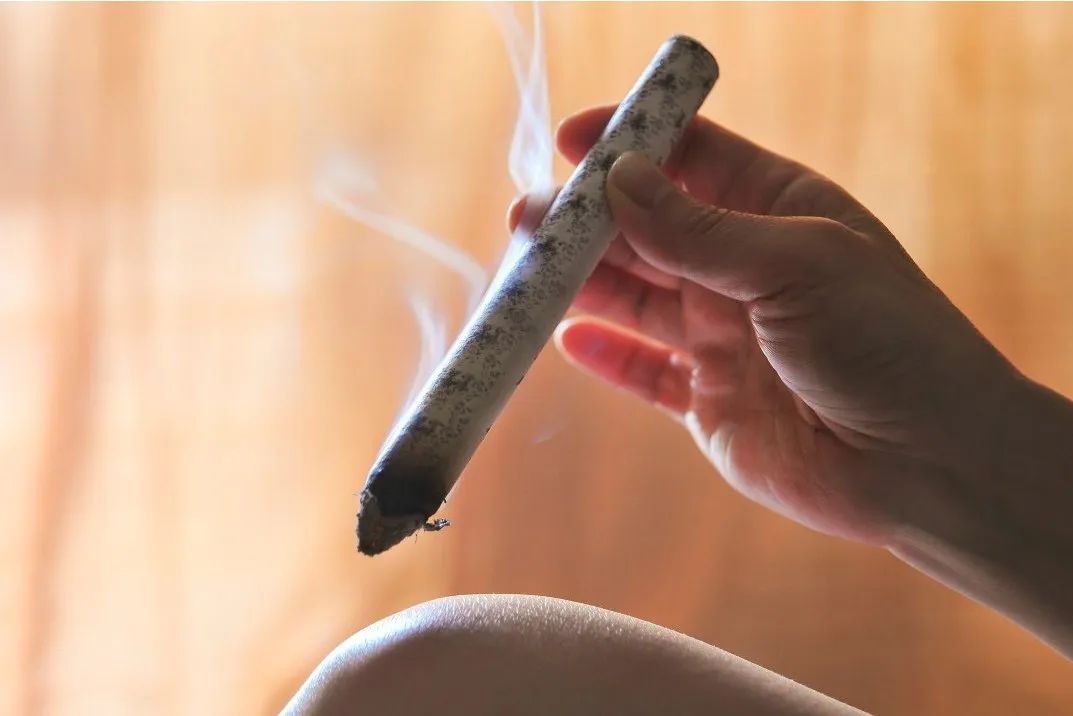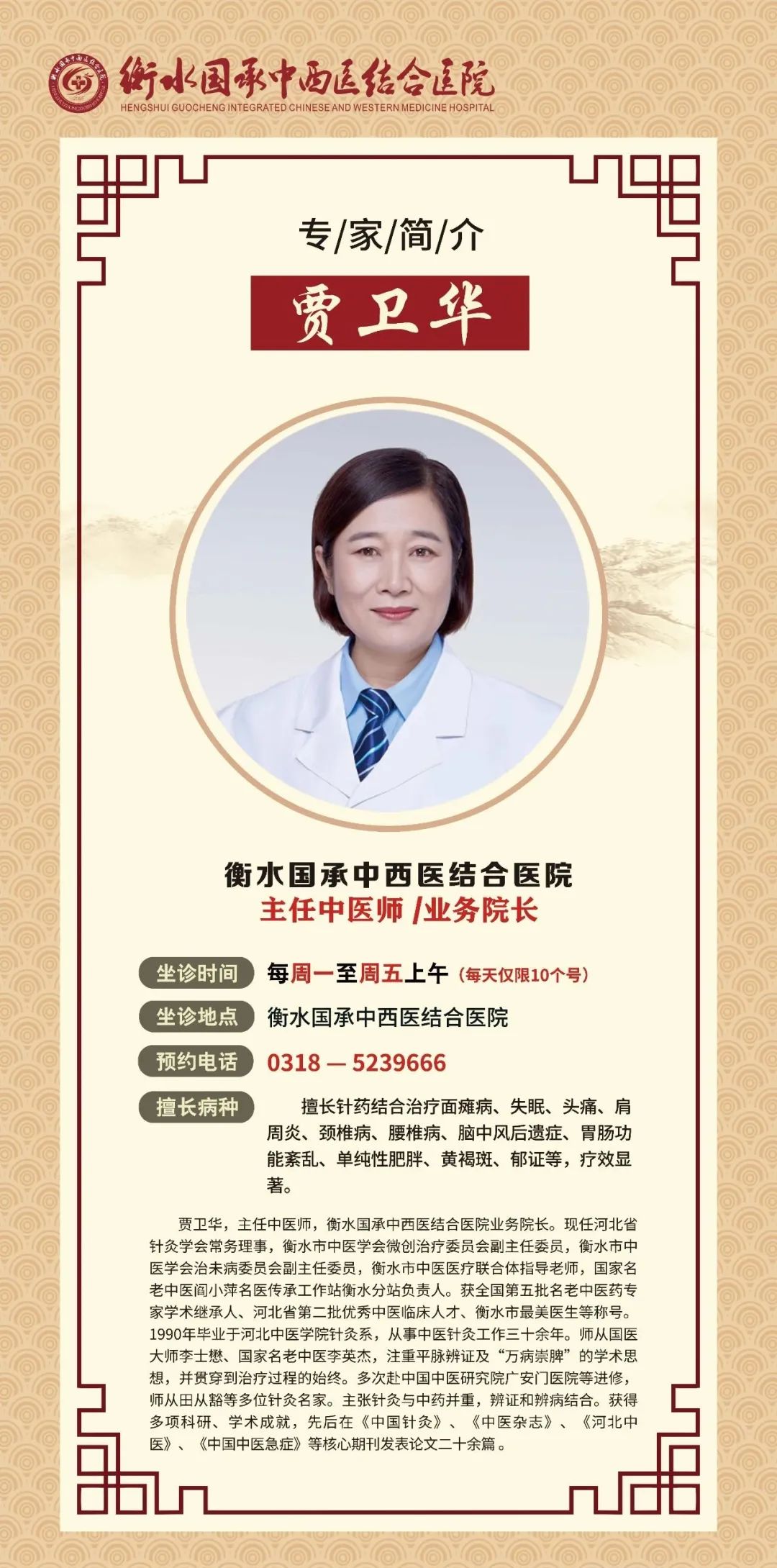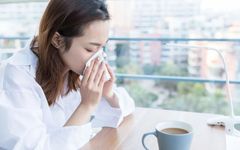
In spring, the weather fluctuates between warm and cold, and the wind is a dominant factor, which is also a season when pathogens proliferate. After a winter of depletion, the body’s Yang Qi is still not fully restored and remains in a relatively weak state. This is especially true for individuals with inherently weak constitutions; when they are invaded by wind pathogens, they are prone to developing lung-related diseases such as colds, coughs, and rhinitis.
Traditional Chinese Medicine (TCM) believes that colds are caused by insufficient Zheng Qi (正气) in the body, allowing external pathogens to invade. Zheng Qi refers to the body’s ability to resist disease. When Zheng Qi is weakened, external pathogens such as wind, cold, heat, and dampness can easily invade the body, leading to the occurrence of colds. Therefore, the core of TCM treatment for colds is to support Zheng Qi and expel pathogens, enhancing the body’s resistance through internal environmental regulation to achieve the goal of curing the cold.

In TCM theory, colds are classified into two types: Wind-Cold (风寒感冒) and Wind-Heat (风热感冒). Wind-Cold colds are primarily caused by the invasion of wind and cold pathogens, with symptoms including chills, fever, headache, body aches, nasal congestion, and runny nose; Wind-Heat colds, on the other hand, are caused by the invasion of wind and heat pathogens, with symptoms such as high fever, slight aversion to wind, headache, sweating, etc. TCM employs different treatment methods for different types of colds, focusing on personalized treatment to maximize efficacy.
How to Manage Wind-Cold Colds
01
What are the Symptoms of Wind-Cold Colds?
Fever: Wind-Cold colds typically present with no fever or low-grade fever; patients may feel slightly warm, with minimal or no sweating, accompanied by symptoms such as body aches and fatigue.Fear of Cold and Wind: Patients often feel a significant fear of cold and wind; even with added clothing or proximity to heat, the sensation of cold remains difficult to alleviate. Warmth measures such as adding clothing, soaking feet in hot water, or drinking ginger syrup can provide comfort.Nasal Discomfort: Wind-Cold colds often lead to nasal symptoms such as nasal congestion and clear runny nose. The nasal discharge is usually clear and may become more pronounced after drinking hot water. Additionally, the patient’s voice may become heavier, or they may experience nasal itching and sneezing.Headache and Body Aches: Patients with Wind-Cold colds may experience headaches and body aches, particularly pain at the back of the head, sometimes accompanied by neck stiffness.Cough: Patients often have cough symptoms, with phlegm typically being white and thin. The cough may be mild but can persist for a long time.Thirst and Tongue Coating: Patients may not feel thirsty, or if they do, they prefer hot drinks. The tongue coating usually appears thin, white, and moist.

02
How to Respond to Wind-Cold Colds
Wind-Cold colds are caused by exposure to cold wind. To manage Wind-Cold colds, the following measures can be taken:Get Plenty of Rest: Allow yourself sufficient rest time, which helps the body better cope with illness.Stay Hydrated: Drinking enough water helps to thin mucus in the body, alleviating sore throat and cough.Keep Warm: Dress appropriately, avoid getting cold, and maintain a suitable indoor temperature to help relieve symptoms of Wind-Cold colds.Gargle with Salt Water: Gargling with warm salt water can relieve throat discomfort.Use a Humidifier: Using a humidifier indoors can increase air humidity, helping to alleviate throat irritation and cough.Drink Hot Soup or Tea: For example, Ginger Soup or Honey Lemon Tea can relieve throat discomfort and cough.Medication Treatment: Based on the advice of a doctor or pharmacist, over-the-counter cold medications such as antibiotics, antiviral drugs, and common cold remedies like Pudilan Xiaoyan Oral Liquid and VC Yinqiao Tablets can help alleviate and stabilize the condition.TCM Therapies: Methods such as cupping, gua sha, moxibustion, and warm acupuncture can help expel cold from the body and relieve symptoms of Wind-Cold colds.Foot Soak Recipe for Expelling Wind and Cold: 15g of Ai Ye (Mugwort), 9g of Fang Feng (Siler), 12g of Zi Su Ye (Perilla Leaf), and 6g of Sheng Jiang (Fresh Ginger). Wash all herbs, bag them, and boil in water for 15 minutes. Strain the liquid and add an appropriate amount of warm water to achieve a suitable temperature for foot soaking..
On the other hand, in addition to external treatments, internal treatment is also important. Friends with Wind-Cold colds can choose light, warm, and easily digestible foods such as rice porridge and noodle soup to avoid burdening the spleen and stomach while also expelling cold.
Two recommended dietary therapies:
01 Brown Sugar Ginger Jujube Soup
Effect:Expels wind and cold, releases the exterior and opens the orifices.
Ingredients: 30g of brown sugar, 15g of fresh ginger, 30g of red dates.
Method: Boil with three bowls of water until reduced by half.
Dosage: For daily health maintenance, once a week; for acute cases of Wind-Cold colds or rhinitis, it can be taken continuously for 2-3 days.
Suitable for: Patients with Wind-Cold and damp-cold colds; can be used for children over 3 years old.
02 White Radish with Honey
Effect:Induces sweating, disperses cold, stops cough, and resolves phlegm.
Ingredients: 1 large white radish, 30g of honey, 5 white peppercorns, 2g of Ma Huang (Ephedra).
Method: Wash and slice the radish, place it in a bowl, add honey, white pepper, and Ma Huang, and steam for half an hour. Consume while hot.
Suitable for: Effective for cough, runny nose, and phlegm caused by Wind-Cold.
Additionally, you can try scallion and fermented soybean soup (light fermented soybeans, scallion whites, yellow wine, fresh ginger) and perilla and mint soup (perilla, mint, fresh ginger). These dietary therapies have certain warming and dispersing effects against wind and cold, but specific usage should be adjusted based on individual conditions and severity of illness.
Please note that while dietary therapies have certain auxiliary therapeutic effects, they cannot completely replace medication treatment. In cases of severe or prolonged Wind-Cold cold symptoms, it is advisable to seek medical attention promptly and follow the doctor’s recommendations for treatment. Maintaining good lifestyle and dietary habits is also an important measure for preventing and treating Wind-Cold colds.

Wind-Heat Colds can be Managed as Follows
01
What are the Symptoms of Wind-Heat Colds?
Wind-Heat colds are caused by the invasion of wind-heat pathogens, leading to disharmony in lung Qi. The symptoms are diverse and pronounced. Here are some common manifestations of Wind-Heat colds:
1. Fever: Patients with Wind-Heat colds typically have a higher body temperature and feel significantly hot.2. Slight Aversion to Wind: Patients may feel slightly averse to wind, but this sensation is relatively mild compared to Wind-Cold colds.3. Head Distension and Pain: Wind-Heat colds often accompany a feeling of head distension and pain, possibly due to rising heat.4. Sweating: Patients may experience sweating, especially during fever.5. Sore and Swollen Throat: Patients often feel throat pain, with redness and swelling in the throat, which may cause discomfort when swallowing.6. Cough: Coughing is a common symptom of Wind-Heat colds, with phlegm possibly appearing yellow or thick.7. Nasal Congestion with Yellow Discharge: Patients typically experience nasal congestion with yellow nasal discharge.8. Thirst and Preference for Drinking: Due to the presence of heat in the body, patients often feel thirsty and prefer to drink more water.9. Red Edges on the Tongue and Thin White or Slightly Yellow Coating: Upon examination, the tongue may show red edges and a thin white or slightly yellow coating. 02
02
How to Respond to Wind-Heat Colds
Wind-Heat colds are caused by the invasion of wind-heat pathogens, often occurring in spring. Here are some specific recommendations:Adjust Lifestyle: Ensure adequate sleep and engage in appropriate physical exercise to enhance immune function. Also, avoid excessive fatigue to prevent worsening symptoms.Adjust Diet: During Wind-Heat colds, patients may experience sore throat, nasal congestion, yellow discharge, cough, and phlegm. Therefore, the diet should focus on light and easily digestible foods, consuming foods with heat-clearing and detoxifying properties such as pears, loquats, cucumbers, lotus root, mung beans, and tremella. Additionally, avoid spicy, greasy, and cold foods, and limit smoking and alcohol.Take Medications to Disperse Wind, Clear Heat, and Detoxify: Under the guidance of a doctor, medications that disperse wind, clear heat, and detoxify, such as Summer Mulberry and Chrysanthemum Granules and Yinqiao Detox Tablets, can be taken. These medications help alleviate symptoms of Wind-Heat colds but should be used under medical supervision to avoid misuse.Therapeutic Methods: Under the guidance of a qualified TCM practitioner, therapies such as acupuncture and cupping can be used as adjunct treatments. These methods can stimulate specific acupoints, helping to clear heat and detoxify, thereby alleviating symptoms of Wind-Heat colds.Two recommended dietary therapies:01 Chrysanthemum Tea
Effect:Disperses wind, clears heat, detoxifies, and brightens the eyes.
Ingredients: Appropriate amounts of Hangju (Chrysanthemum) and Goji Berries.
Method: Soak in boiling water, and you can add an appropriate amount of rock sugar for flavor.
Indications: Symptoms such as fever, headache, and cough. It helps to disperse wind-heat and relieve discomfort caused by Wind-Heat colds.
02 Honeysuckle and Reed Root Soup
Effect:Clears heat, drains fire, cools blood, stops bleeding, generates fluids, and quenches thirst.
Ingredients: Fresh reed root, honeysuckle, and mint.
Method: Boil honeysuckle and fresh reed root in water for 20 minutes, then add mint and boil on high for 5 minutes, adding a small amount of white sugar to drink.
Suitable for: Has excellent heat-clearing properties, effectively alleviating fever, dry throat, thirst, and thick phlegm cough.

 The TCM department, as a key specialty of the hospital, adheres to the treatment philosophy of syndrome differentiation and treatment based on TCM, relying on modern medical diagnostic and therapeutic equipment and techniques. It combines TCM syndrome differentiation with modern disease diagnosis, fully utilizing traditional Chinese herbal medicine for oral and topical use, acupuncture, moxibustion, tuina, cupping, fumigation, and medicated baths, along with modern treatment technologies such as ion introduction of Chinese medicine, medium-frequency therapy devices, and pulsed magnetic therapy devices. The department treats a wide range of conditions including TCM internal medicine syndromes, bone and joint pain, cardiovascular and cerebrovascular diseases, respiratory and digestive systems, rheumatism, endocrine diseases, chronic liver diseases, gynecological disorders, infertility, pediatric diseases, and also provides services such as “winter diseases treated in summer,” “preventive treatment of diseases,” and TCM health care services.
The TCM department, as a key specialty of the hospital, adheres to the treatment philosophy of syndrome differentiation and treatment based on TCM, relying on modern medical diagnostic and therapeutic equipment and techniques. It combines TCM syndrome differentiation with modern disease diagnosis, fully utilizing traditional Chinese herbal medicine for oral and topical use, acupuncture, moxibustion, tuina, cupping, fumigation, and medicated baths, along with modern treatment technologies such as ion introduction of Chinese medicine, medium-frequency therapy devices, and pulsed magnetic therapy devices. The department treats a wide range of conditions including TCM internal medicine syndromes, bone and joint pain, cardiovascular and cerebrovascular diseases, respiratory and digestive systems, rheumatism, endocrine diseases, chronic liver diseases, gynecological disorders, infertility, pediatric diseases, and also provides services such as “winter diseases treated in summer,” “preventive treatment of diseases,” and TCM health care services.
Outpatient Hours: 8:00 AM – 8:00 PM
Appointment Phone: 0318-5239666
Hospital Address: Next to the Baohuo Building on Renmin Road, Hengshui City (North of Xinfang Shopping Mall)
Transportation Routes:
1. Take the fast bus No. 1, 2, 3, 4, or 4 from the train station to Guocheng Hospital Station.
2. Take bus No. 5, 8, 9, 14, 22, 29, 31, or 32 from within the city, get off at the intersection of Central Street and Renmin Road, and walk 200 meters east to the west area of the Baohuo Building.

